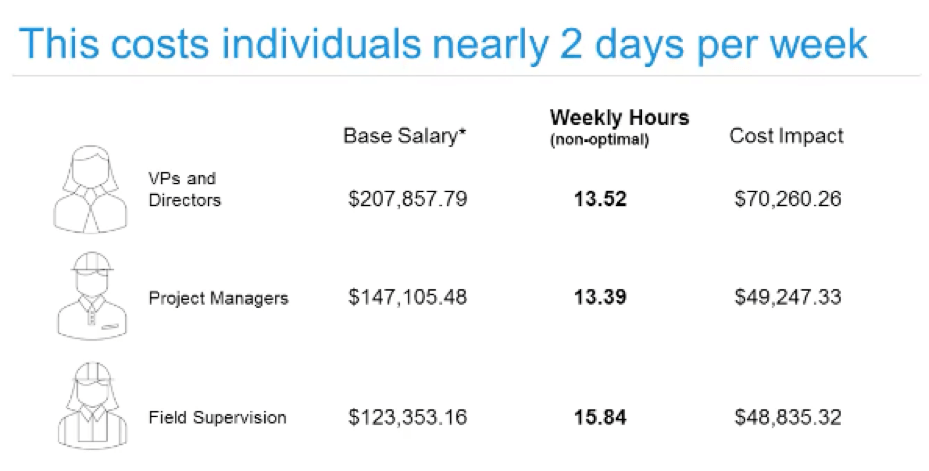In a survey study of the US construction industry, it was found out that time wasted on non-optimal activities—looking for data to fix mistakes, reworks, conflict resolution and related activities—account for an overspending of about $177 billion in labour costs per year in the US alone.
The industry research report surveyed nearly 600 construction leaders that detailed how their project teams spend their time while in the construction sites, including how they manage and communicate information, and how they collaborate. The sample was comprised of respondents from the US, Australia, New Zealand, United Kingdom, and Canada—49% of the respondents were from general contractor firms, 36% are from specialty trades, and 15% were owners.
The respondents were a mix of respondents from the commercial sector, the industrial and manufacturing, heavy civil, healthcare, oil, gas, and energy, education, and government sectors.
This joint study by FMI Corporation with PlanGrid addresses the need to reconsider how the construction sector should handle and manage project data and collaboration to improve productivity and decrease cost and budget overruns.
Construction time wasters
According to the study, about 14 hours per week is wasted on non-optimal activities on the construction site. These non-optimal activities may include time spent on unnecessary retrieval of specific data or information, conflict resolution, and figuring out mistakes and doing reworks.
That’s 35% of working hours that could take up one to two full working days to resolve preventable issues or problems. Time spent on non-optimal tasks is time taken away from optimal activities that add real value to the project.
According to the survey’s respondents, these are the main time wasters per week:
- 5 hours spent to unnecessarily look up or hunt down project data like revised plans, different drawing versions, budget cut sheets, and other relevant information needed for the project.
- 7 hours spent to resolve avoidable conflicts like stakeholder disagreements.
- 9 hours spent on fixing up mistakes or reworks.
From an individual consideration of key positions, it would look like this:
For a project manager with a base salary of $147, 105.48, his wasted hours on non-optimal activities could cost $49.247.33 per year.
Because of the construction industry’s organisational shortcomings when it comes to how information is shared and managed, key company positions lose one to two full working days to tasks that have zero value in the project and at the same time wastes labour costs that is almost equivalent to another full-time back office position per year.
Even with this tantamount cost, these project managers actually expect and are not even surprised that they have to waste time on zero-value tasks. It is common practice that key positions have to waste time and resources on issues that cause frustrations and provide no value to the project.
How to approach the problem of wasted labour cost
Non-optimal labour cost is nothing but wasted cost. In a hypercompetitive industry, this labour inefficiency needs to be addressed. Providing a solution for this would mean that you would aim to reduce your labour waste. Regardless if you stick with the same business model or shift to a new one, it all comes down to cutting down on non-optimal tasks by improving information management and improving collaboration.
Investing on a software that fits your construction business can potentially avoid expensive wasted labour costs. For a step-by-step guide on how you can improve your own productivity on the construction site, we have an ebook that’s free to download.


 Image by FMI.
Image by FMI.

